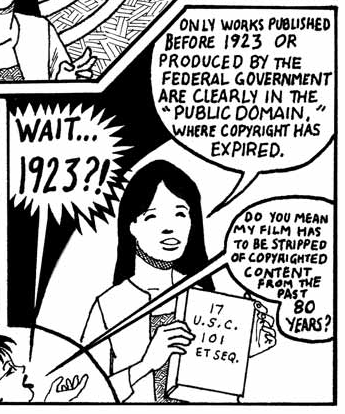As the new year dawns, published works from 1923 enter the public domain. These works were originally slated to lose copyright protection in 1999.
The Public Domain

When a work is in the public domain, that means it is not protected by copyright. People are free to perform or copy the work, or to create new works based on it, without limiting their use to what is allowable as fair use, and without going through the often confusing and potentially expensive process of figuring out whose permission is needed and obtaining that permission.
What Happened in 1998

In 1998, Congress passed the Sonny Bono Copyright Term Extension Act. It extended the term of copyright protection from 75 years to 95 years for works published before 1978.
If Congress had not passed that law, works published in 1923 would have entered the public domain on New Year’s Day 1999, because that’s when their 75-year term of copyright protection would have expired.
The extended 95-year term expires 20 years after January 1, 1999; in other words, today—January 1, 2019.
Examples of 1923 Works
Here are a few popular works that enter the public domain today because they were first published in 1923:
- Cecil B. DeMille’s original silent movie “The Ten Commandments,” which he remade more famously in 1956.
- Robert Frost’s poem “Stopping by Woods on a Snowy Evening,” which ends with the well-known line “and miles to go before I sleep.”
- Cecil Mack’s and James P. Johnson’s ragtime song “Charleston,” which popularized the iconic 1920’s dance, the Charleston. The song and dance were based on African rhythms.
Learn More
Both Smithsonian magazine and Duke Law School’s Center for the Public Domain have more detailed information on today’s transition of works published in 1923 into the public domain.